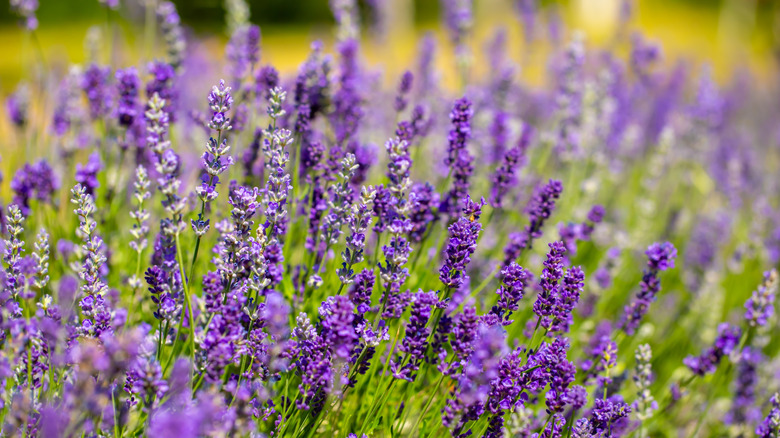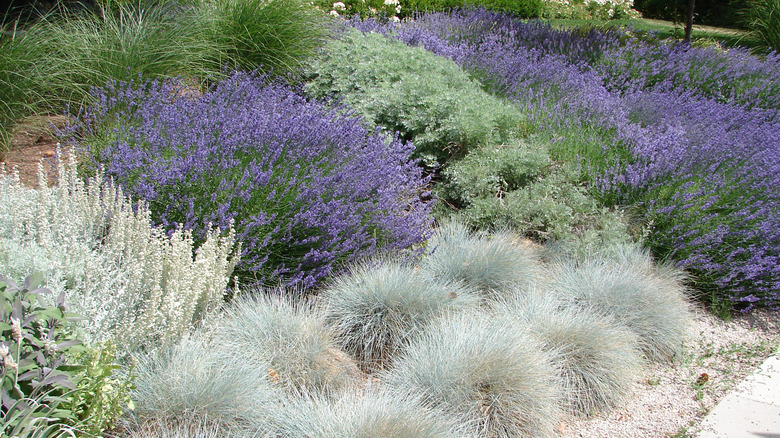The Ornamental Grass That Makes A Good Ground Cover Companion For Lavender
Lavender in your garden provides timeless beauty, thanks to its purple flowers and calming scent. But even lavender can benefit from companion plants. While there are some plants you'll want to avoid growing with lavender, there are many others that pair perfectly with it. Enter blue fescue (Festuca glauca), a colorful ornamental grass to add to your landscape that is as practical as it is beautiful. Best of all, blue fescue thrives in the same conditions as lavender, making it an ideal ground cover companion.
Both these plants thrive in full sun and well-drained soil, with overlapping growing zones — lavender is hardy in USDA zones 5 through 9, while blue fescue thrives in zones 4 through 8. This compatibility extends to their drought tolerance and preference for lean soil conditions, which means there's less competition for nutrients. And since both plants prefer minimal watering, they support a low-maintenance landscape with minimal intervention needed.
How to grow and care for lavender and blue fescue
Blue fescue serves as an effective ground cover without overshadowing lavender. It grows in tidy, compact clumps that remain controlled, rather than the aggressive spread that some ground covers exhibit. This makes it a functional companion plant that complements rather than competes with lavender. Visually, the rounded, texture-rich clumps of blue fescue contrast beautifully with lavender's upright floral spikes. The semi-evergreen nature of this ornamental grass ensures year-round garden interest, especially in milder climates.
Blue fescue's dense, tufted growth habit suppresses weeds naturally, by minimizing the availability of bare soil where weeds could germinate. It also acts as a physical barrier that prevents sunlight from reaching the soil, which further inhibits weed growth and allows the neighboring lavender to thrive. Meanwhile this drought-tolerant ornamental grass will attract more feathered friends to your garden, including seed-eating birds like finches and sparrows. While lavender isn't a bird magnet, its fragrant blooms lure pollinators like bees and butterflies, enhancing the biodiversity of your outdoor space.

